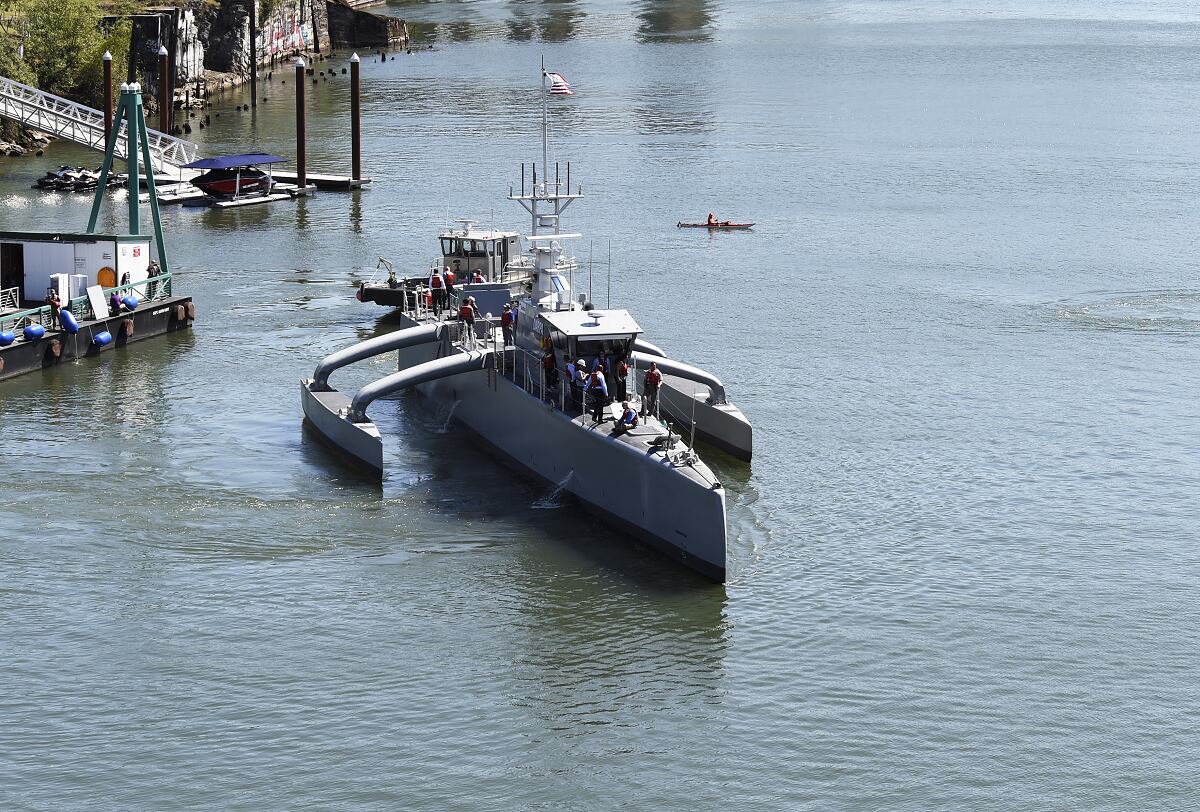WASHINGTON — The U.S. Navy will get its two large unmanned surface vessels in 2020, but lawmakers want the service to proceed with caution.
The recently passed 2020 defense appropriations bill buys both the LUSVs the Navy requested, but the legislation puts strict limits on what the service can do with them. Furthermore, Congress wants the Navy to have a plan before charging ahead. Congress also forbade the Navy from dropping a vertical launching system into its new LUSV, as the Navy has said it intends to augment the missile capacity of its larger manned combatants.
“Incremental upgrade capability for a vertical launch system may be addressed in future fiscal years,” read the agreement between House and Senate appropriators.“It is directed that no funds may be awarded for the conceptual design of future LUSVs until the Assistant Secretary of the Navy (Research, Development and Acquisition) briefs the congressional defense committees on the updated acquisition strategy for unmanned surface vessels.”
The service asked for two of the LUSVs in 2020, with plans to buy eight more over the five-year projection known as the Future Years Defense Program, or FYDP. The appropriations bill overrides the National Defense Authorization Act, which had limited the Navy to one LUSV. If the authorization and the appropriations bill are in conflict, the service interprets the last bill signed into law as the expressed will of Congress.
RELATED

In total, lawmakers appropriated $209.2 million for the two LUSVs, with another $50 million for designing the ship without a vertical launching system. In August, USNI News reported that the Navy planned to adapt something similar to an offshore support vessel for the purpose. The program is derived from a classified project birthed in the Pentagon’s Strategic Capabilities Office.
The drive toward integrating unmanned surface vehicles in the force, which Navy officials suggested could make up a significant portion of the future fleet’s force structure, was kicked off in earnest with the rollout of the 2020 budget. Senior Navy officials have talked about the LUSV as a kind of external missile magazine that can autonomously navigate to and integrate with the force, then shoot its missiles and return for reload, keeping the big manned surface combatants in the fight and fielded longer.
But the Defense Department likely drew unwanted attention to the program by using investments in this kind of unmanned technology as part of the justification for canceling the refueling of the aircraft carrier Harry S. Truman, meaning the ship would’ve been decommissioned with half its intended 50-year hull life remaining, according to a source familiar with the authorizers’ thinking on the issue.
“The linkage with the Truman refueling shined a spotlight on the USVs,” the source said. “It’s important to remember that in 2019 there were zero LUSVs in the budget. Then in 2020 there were 10 at a cost of $3 billion over the FYDP. That kind of ramp-up will attract attention in any budget.
“In view of uncertain LUSV concepts of operations, requirements, technical maturity — including many [first-of-a-kind capabilities] — the contrast between a proven aircraft carrier and its air wing and unproven unmanned surface vessels is stark.”
David B. Larter was the naval warfare reporter for Defense News.






